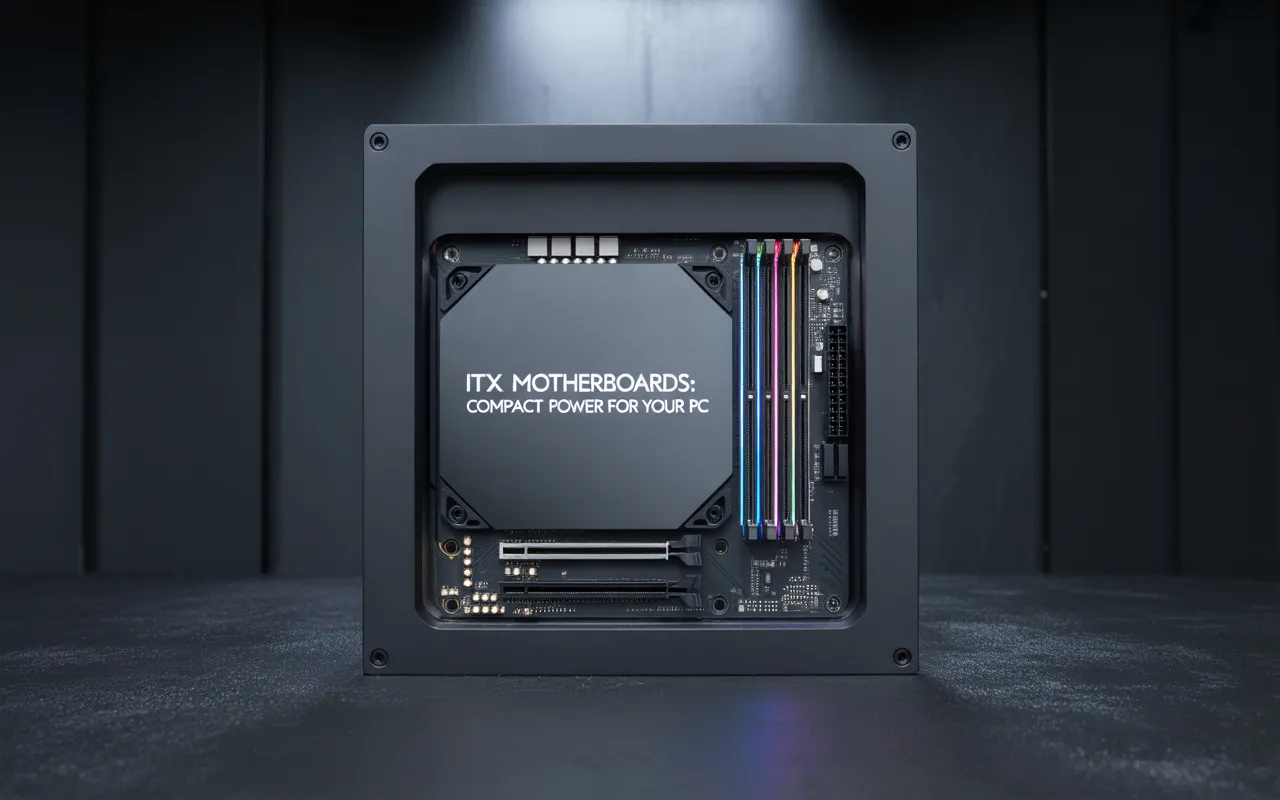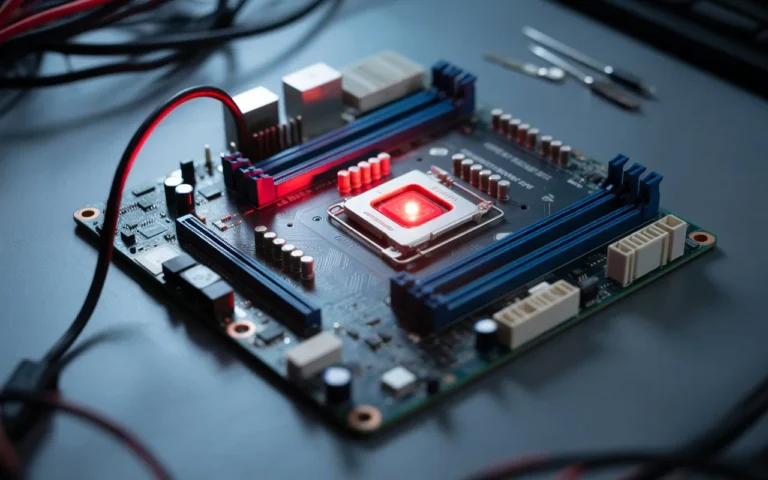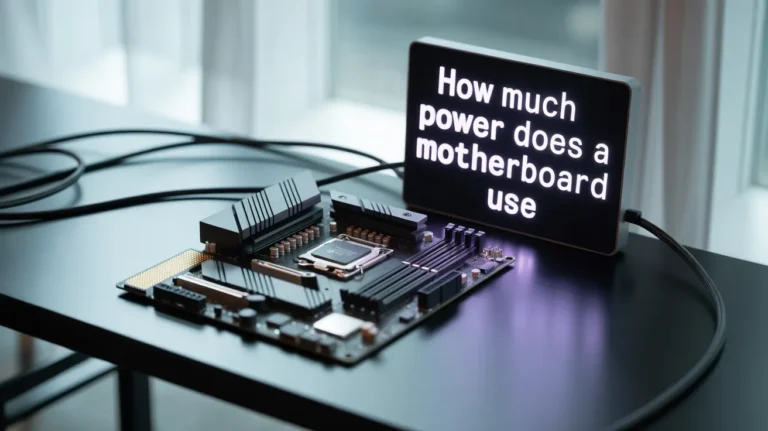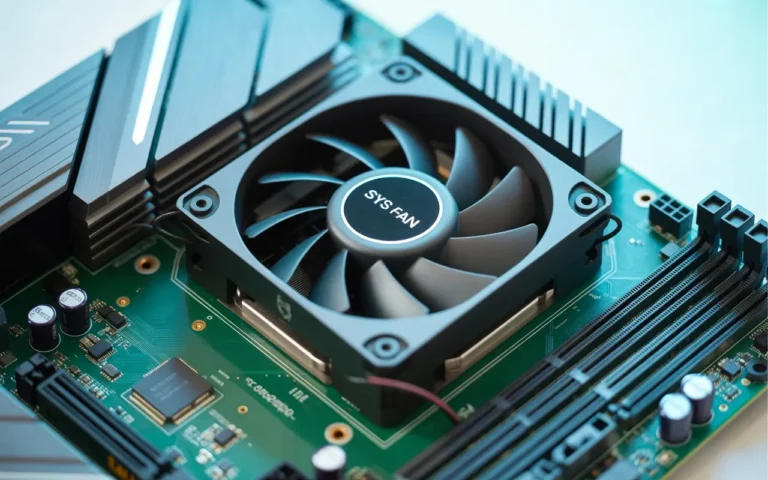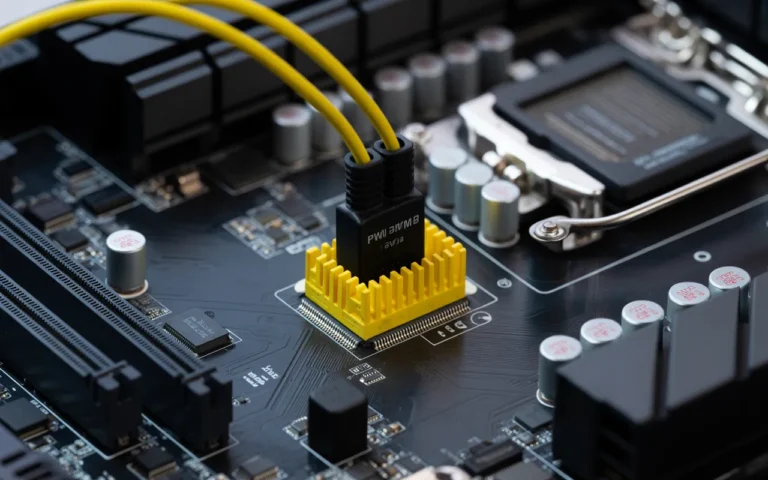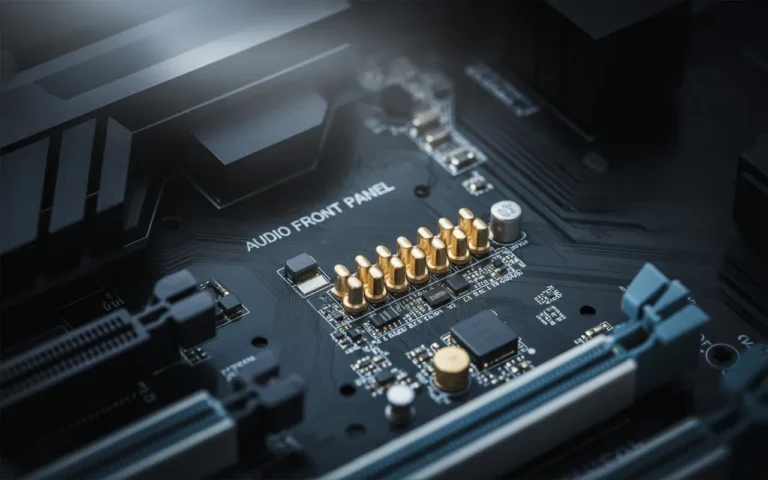What Is an ITX Motherboard? – A Compact Solution 2025!
Did you know that over 30% of PC builders now choose compact ITX motherboards? They love the mix of power and portability. This change is changing how we see PC hardware. ITX motherboards, such as the mini ITX, are popular for their strong performance in a compact size. They’re great for building small PCs where space is limited.
We’ll explore the special features and benefits of ITX motherboards. We’ll see how they’re changing PC building.
Key Takeaways:
- Understanding the compact design of ITX motherboards and their advantages.
- Exploring the significance of mini ITX motherboards in modern PC builds.
- Learning about the key features that make ITX motherboards ideal for compact PCs.
- Discovering how ITX motherboards are revolutionizing PC hardware.
- Gaining insights into choosing the right ITX motherboard for your needs.
What is an ITX Motherboard?
ITX motherboards are known for their small size. They are a favourite among PC builders. They offer efficiency without losing performance.
Origin and Development of the ITX Form Factor:
VIA Technologies introduced the ITX form factor in 2001. It was designed to be compact for basic computing. Over time, it evolved into Mini-ITX and Nano-ITX for different needs.
Today, ITX motherboards are packed with features. They support powerful CPUs, fast RAM, and advanced graphics cards. This is despite their small size.
Key Characteristics and Specifications:
ITX motherboards are small, measuring 170mm x 170mm. They have essential features, such as multiple RAM slots and PCIe slots. They also have various I/O ports.
Their specs vary based on the chipset and CPU socket. It’s essential to select an ITX motherboard that meets your specific needs.
Everyday Use Cases for ITX Builds:
ITX motherboards are great for compact PCs and home theatre systems. They fit well in tight spaces, like under desks or in entertainment centres. They’re also loved by those who prefer minimalism and portability without losing performance.
ITX vs ATX Motherboards: Size Comparison
ITX and ATX motherboards are two different types of PC building. They vary in size, capability, and use. Knowing these differences helps you choose the right motherboard for you.
Dimensional Differences and Form Factors:
ITX motherboards are smaller, at 170mm x 170mm. ATX motherboards are bigger, at 305mm x 244mm. This size difference affects the PC’s size and layout.
Component Layout and Design Considerations:
The small size of ITX motherboards means careful planning. Important things to consider include:
- Where to put the CPU and RAM
- The power delivery system design
- Expansion slot availability
Space Requirements in Different PC Cases:
Choosing between ITX and ATX motherboards also impacts case selection. ITX builds fit in more minor cases, perfect for mini-PCs. ATX motherboards require larger cases, providing more space for components and cooling.
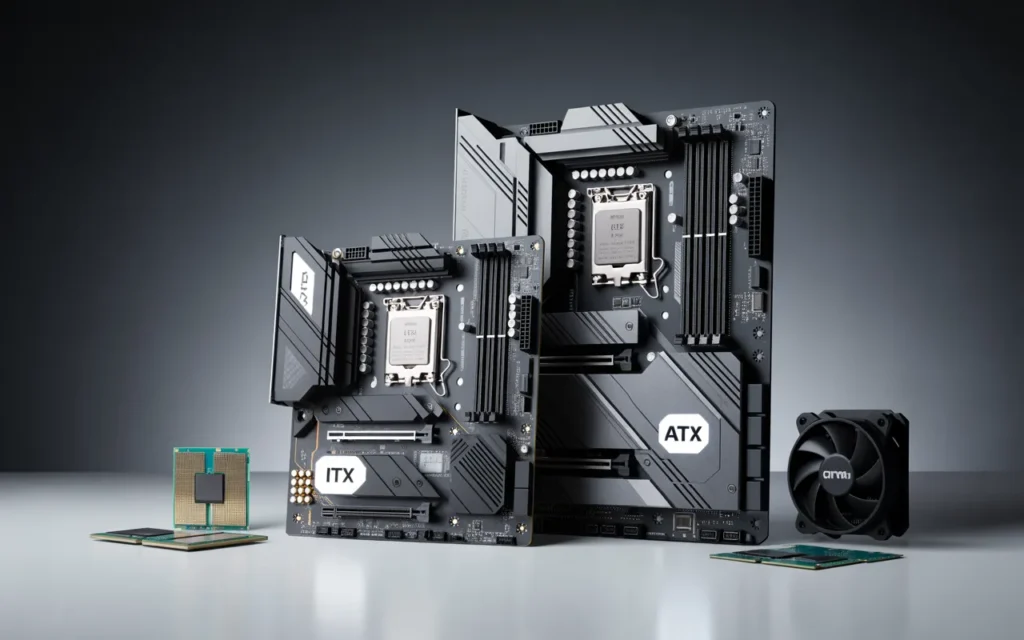
Benefits of Choosing an ITX Motherboard:
ITX motherboards are great because they are small. This makes building PCs more flexible.
Space Efficiency and Portability Advantages:
ITX motherboards are compact, making them ideal for small PCs. They fit into tight spots, such as small desks. This makes them easy to move around.
Power Consumption and Thermal Considerations:
ITX motherboards use less power than big ones. This saves energy and keeps them cool. But they can get hot, so good cooling is key.
Aesthetic Appeal in Modern PC Builds:
ITX motherboards are great for stylish PCs. They look clean and straightforward. Many cases feature glass panels to showcase the inside.
In short, ITX motherboards save space, consume less power, and offer an aesthetically pleasing design. They are perfect for building small, efficient, and beautiful PCs.
How to Select the Right ITX Motherboard for Your Needs:
Finding the right ITX motherboard is key to a great build. With numerous choices, it’s essential to consider what you truly need. This ensures your build works well and performs great.
CPU Socket and Chipset Compatibility:
First, verify that the motherboard is compatible with your CPU. For example, an AMD Ryzen needs an AM4 socket. Also, look at the chipset. It affects features such as USB ports and overclocking.
RAM Capacity and Speed Considerations:
RAM is essential too. Ensure the motherboard can support the RAM you intend to use. For optimal performance, select a motherboard that supports either DDR4 or DDR5 RAM.
Expansion Slot Limitations and Solutions:
ITX boards often have few slots. They usually have just one PCIe slot. If you need more, think about adapters or external boxes. Ensure you have a slot available for your graphics card.
Connectivity Options and I/O Ports:
Look at the motherboard’s ports and connectors. It should have enough USB and SATA ports for your devices.
Popular ITX Motherboard Models and Features:
Some ITX boards are more popular than others. Here’s a look at a few:
| Model | CPU Socket | RAM Capacity | Expansion Slots | Connectivity Options |
| ASRock B450M | AM4 | 32GB DDR4 | 1x PCIe 3.0 x16 | USB 3.1, SATA 6Gb/s |
| ASUS ROG Strix Z390-I | LGA 1151 | 32GB DDR4 | 1x PCIe 3.0 x16 | USB 3.1 Gen 2, SATA 6Gb/s |
| MSI B550I PRO WIFI | AM4 | 64GB DDR4 | 1x PCIe 4.0 x16 | USB 3.2 Gen 2, SATA 6Gb/s, Wi-Fi 6 |
By examining these factors and comparing models, you can select the best ITX motherboard. This ensures your build is compatible and performs well.
Step-by-Step ITX Motherboard Installation Guide:
Installing an ITX motherboard is a precise task. It needs careful attention and a step-by-step plan. Ensuring everything fits correctly and is installed properly is crucial to a successful build.
Preparing Your Case and Components:
Begin by gathering your case and its components. Ground yourself to avoid static damage. Then, unpack and check your parts. Ensure your ITX case is compatible with your motherboard.
Check if your case is compatible with ITX. It should have the right holes and cable management options.
Mounting the Motherboard Correctly:
Mounting the motherboard is delicate. Use stand-offs and screws to attach it to the case. Make sure it’s aligned with the holes.
Connecting Power and Data Cables:
Connecting cables is vital. Plug power cables into the right motherboard ports. Also, connect data cables to their headers securely.
| Cable Type | Motherboard Connector | Purpose |
| 24-pin ATX | ATX Power Connector | Main Power Supply |
| 8-pin EPS | EPS Power Connector | CPU Power Supply |
| SATA | SATA Ports | Storage Drive Connection |
Installing CPU, RAM, and Storage:
Installing CPU, RAM, and storage is the primary focus. Apply thermal paste to the CPU die. Then, put the CPU in the socket.
Put RAM modules in the DIMM slots. Make sure they click in place.
Common Installation Challenges and Solutions:
Challenges include managing cables and avoiding static damage. Solutions are cable ties and grounding. Also, plan your build carefully.
Optimizing Performance with ITX Motherboards:
Optimizing ITX motherboard performance needs careful thought. ITX motherboards are small, but they don’t lack power. By focusing on key areas, users can maximize the benefits of their ITX motherboard.
Cooling Solutions for Compact Builds:
Low-profile coolers and innovative case designs are very helpful. Additionally, properly managing cables helps keep the case cool.
BIOS Settings for Maximum Efficiency:
Changing BIOS settings can enhance the performance of ITX motherboards. Look for options that improve power use and tweak performance. This includes adjusting fan settings, enabling XMP for RAM, and fine-tuning CPU settings.
Cable Management in Limited Spaces:
Cable management is essential in ITX builds. It ensures good airflow and easy access. Use cable ties to hide cables behind the motherboard tray, and opt for compact components to achieve a neat build.
Troubleshooting Common ITX-Specific Issues:
ITX builds can encounter unique problems, including overheating and compatibility issues. Troubleshooting often means checking cooling, cable management, and component compatibility with the ITX form factor.
Conclusion:
Understanding what an ITX motherboard is key to building compact yet powerful PCs. ITX motherboards save space, use less power, and look great. They help in many ways, like making PCs easier to carry and keeping them cool. Choosing the right ITX motherboard and setting it up correctly allows you to build fast systems. ITX motherboards are great for both experts and beginners in PC building. They offer a smart way to build a compact PC that’s fast and aesthetically pleasing.
FAQ:s
What is the main advantage of using an ITX motherboard?
The main benefit of an ITX motherboard is its small size. This makes it perfect for building PCs in tight spaces.
Can I use an ITX motherboard with any PC case?
No, ITX motherboards fit only in specific cases. Ensure your case supports Mini-ITX before making a purchase.
How does the ITX motherboard compare to the ATX motherboard in terms of size?
ITX motherboards are much smaller than ATX ones. They measure 170mm x 170mm, while ATX is 305mm x 244mm.
Are ITX motherboards less powerful than ATX motherboards?
Not always. ITX boards can handle powerful CPUs and GPUs, despite their smaller size. But they might have fewer slots and ports.
What are the key considerations when selecting an ITX motherboard?
When selecting an ITX motherboard, consider the CPU socket, RAM, expansion slots, and ports. Make sure it fits your needs.
Can I install a large GPU on an ITX motherboard?
Yes, but check the case and motherboard first. Some ITX cases can accommodate large GPUs, but this depends on the design.
How do I improve cooling in an ITX build?
Utilize a high-quality CPU cooler and ensure adequate airflow in your case. Also, apply thermal interface materials correctly.
Are ITX motherboards more expensive than ATX motherboards?
Typically, ITX boards are more expensive than ATX ones. This is because they pack more features into a smaller space.
Also Read: How Many USB Ports Does My Motherboard Have? – Upgrade Now

